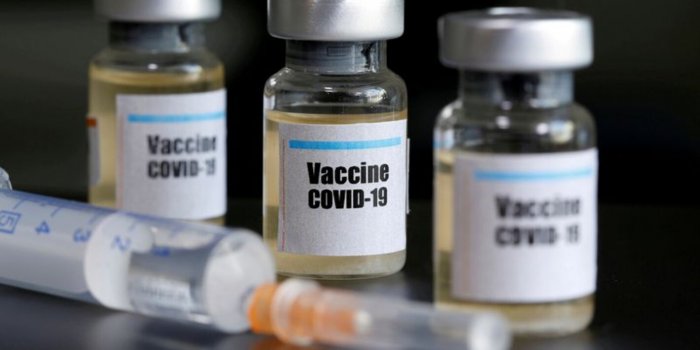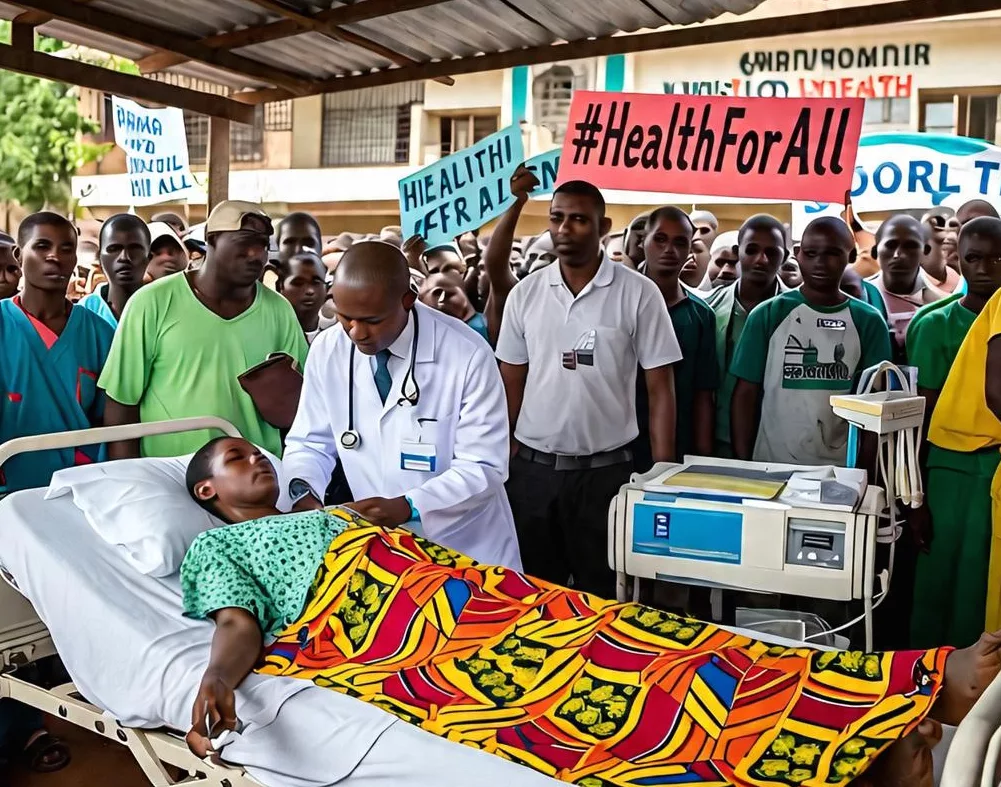|
Getting your Trinity Audio player ready...
|
New evidence on HIV and TB drug resistance, updates on acceptability of HIV prevention tools and increased risk faced by women and girls under COVID-19 lockdowns will also feature at virtual conference.
New studies to be presented at IAS 2021 – the 11th IAS Conference on HIV Science – show important progress in HIV prevention, treatment, and cure efforts despite major disruption to HIV programmes and research during the COVID-19 pandemic.
Several studies spotlight the intersection of the HIV and COVID-19 pandemics, including new evidence from a large-scale World Health Organization (WHO) analysis that HIV is a significant independent risk factor for severe COVID-19 illness at hospitalization and in-hospital death. There is also evidence from Uganda that women face an increased risk of gender-based violence and HIV during COVID-19 lockdowns.
Convened by IAS – the International AIDS Society – the virtual conference will expect around 6000 participants from 18-21 July. The conference officially opens Sunday with remarks from speakers including German Chancellor Angela Merkel; and a panel discussion on the COVID-19 and HIV pandemics with global health experts including Anthony Fauci, director of the U.S. National Institute of Allergy and Infectious Diseases.
The IAS featured five studies at a press conference held yesterday to preview scientific highlights for media.
WHO report finds HIV infection is an independent risk factor for severe COVID-19 illness
A new global analysis from WHO concludes that HIV infection is a significant independent risk factor for both severe illness at hospital admission and in-hospital mortality.
Informed by these findings, the IAS called on countries to add people living with HIV to the list of groups prioritized in vaccine rollout efforts.
“This study underscores the importance of countries including all people living with HIV in the list of priority populations for national COVID-19 vaccine programmes,” IAS President and IAS 2021 International Co-Chair Adeeba Kamarulzaman said. “The global community must also do much more to bring COVID-19 vaccines to countries around the world with high prevalence of HIV and other diseases. It is unacceptable that as of today, less than 3% of the entire African continent has received a single dose of the vaccine and less than 1.5% have received both doses.”
Previous evidence regarding the impact of HIV infection on the severity and mortality of COVID-19 has been limited and sometimes conflicting, and most analyses have been based on relatively small cohorts of individuals in specific settings. In this report, WHO researchers analysed clinical data submitted to the WHO Global Clinical Platform for COVID-19 from 24 countries on more than 15,500 people living with HIV who were hospitalized for COVID-19.
The mean age of these patients was 45.5 years. About 37% were male, about 92% had received antiretroviral therapy and about 36% had severe or critical COVID-19 illness on admission. Their most common underlying chronic conditions were hypertension, diabetes and obesity. Among patients with a known outcome, 23% died in hospital. The study team determined that HIV infection was associated with an increased risk of severe or critical COVID-19 presentation (aOR 1.13, 95% CI: 1.09–1.17), after adjusting for age, sex and comorbidity burden, and of in-hospital mortality (aHR 1.30, 95% CI: 1.24–1.36) after adjusting by age, gender, disease severity and comorbidities burden.
Improved strategy to treat highly drug-resistant TB
Positive results from ZeNix, a Phase 3 trial seeking to improve a key treatment strategy for highly drug-resistant TB, could lead to changes in TB treatment guidelines and have real benefits for people living with TB. The study enrolled 181 people with highly drug-resistant TB in South Africa, Russia, Georgia, and Moldova. They were treated for six months with daily bedaquiline and pretomanid, and daily linezolid (a combined regimen known as BPaL) starting at 1,200mg for either six or two months or 600mg for either six or two months.
A high relapse-free cure rate was observed in all four study arms. In addition, people who received reduced doses and/or shorter durations of linezolid were less likely to experience adverse events of peripheral neuropathy and myelosuppression. They were also less likely to require linezolid dose modification. According to the study team, these results confirm the high relapse-free cure rate for the BPaL regimen in highly drug-resistant TB and suggest that reduced doses and/or shorter durations of linezolid than 1,200 mg for six months have similar efficacy and improved safety.
“This month, we will mark 100 years since the BCG vaccine for tuberculosis was first administered. This vaccine has saved many lives – but unfortunately, it has very limited effectiveness and it is still the only TB vaccine we have,” IAS 2021 Local Co-Chair Hendrik Streeck, the Director of the Institute of Virology and Professor of HIV Research at the University of Bonn in Germany, said. “This anniversary is a reminder of the urgent need for improved prevention and treatment options, including for highly drug-resistant TB.”
High rates of HIV drug resistance in PrEP rollout participants
A study from the Global Evaluation of Microbicide Sensitivity (GEMS) project found high rates of drug resistance in individuals who were diagnosed with HIV while participating in HIV pre-exposure prophylaxis (PrEP) rollout programmes in sub-Saharan Africa.
The project implemented drug resistance monitoring for PrEP users who were diagnosed with HIV during participation in oral TDF-based PrEP programmes in Eswatini, Kenya, South Africa and Zimbabwe. Of the 204 participants with reported seroconversions on PrEP, 175 provided a sample for the study. These participants had a median age of 24 and three-quarters were female.
Tenofovir-diphosphate was detectable in most of the samples and most participants self-reported good or fair adherence to PrEP. A total of 104 of the 175 samples were successfully genotyped and at least one major HIV drug-resistant mutation was detected in 45% of them. The study team determined that the high frequency of HIV drug resistance in people living with HIV on PrEP exceeds background levels of transmitted nucleoside and nucleotide resistance in sub-Saharan Africa.
“Drug resistance in PrEP breakthrough infections could threaten treatment effectiveness, contribute to spread of resistance and undermine efforts to prevent HIV,” Prof Streeck said. “These findings reinforce the need for PrEP rollout programmes to check for acute infections before starting people on PrEP and to conduct ongoing HIV drug resistance monitoring.”
Promising adherence to oral PrEP and the dapivirine vaginal ring
Interim results from the REACH HIV prevention study show encouraging levels of adherence to both the dapivirine vaginal ring and oral PrEP among adolescent girls and young women in Africa. The study assessed safety, adherence and acceptability of both products among adolescent girls and young women.
The study enrolled nearly 250 HIV-negative, non-pregnant young women aged 16 to 21 years from South Africa, Uganda and Zimbabwe. Participants were randomized to either the monthly dapivirine ring or daily oral PrEP for six months and then switched to the second product for six months. Most participants had at least moderate adherence to the ring and oral PrEP. High adherence was observed in about half of the ring users and about 22% of oral PrEP users. Adverse events of Grade 2 or higher were experienced by 78% of ring users and 77% of oral PrEP users.
Acceptability varied, with about 88% liking the ring and about 64% liking oral PrEP. Only one HIV acquisition was reported among study participants. The study team concluded that adherence to the dapivirine ring and oral PrEP was higher than previously observed among African adolescent girls and young women. Both products were well tolerated and highly acceptable.
“Adolescent girls and young women account for most of the new HIV infections in sub-Saharan Africa. These findings should accelerate efforts to make these two prevention options available to all those who can benefit,” Prof Kamarulzaman said.
Sexual violence and HIV exposure during Uganda’s COVID-19 lockdown
Striking results from a large study in Uganda show that sexual violence reports and HIV exposure increased among females during the country’s COVID-19 restrictions.
Researchers analysed routine programme data from the Uganda Health Management System and the Uganda Child Helpline to correlate COVID-19 restrictions with gender-based violence reports, uptake of HIV post-exposure prophylaxis (PEP) and teen pregnancy among Ugandan females. They compared data from two time periods: the six months prior to COVID-19, starting in October 2019; and the first six months of COVID-19 restrictions, starting in April 2020.
They found that among women of all ages, during the first six months of COVID-19 restrictions, there was a 24% increase in post-rape reports and an 18% reduction in PEP uptake compared with the pre-COVID-19 period. More than half of those who reported for post-rape care after the recommended 72-hour intervention timeframe cited lockdown restrictions as the main reason for coming late.
The study team also found that among Ugandan girls, the odds of reporting sexual violence during the COVID-19 period was 1.3 times higher than in the pre-COVID-19 period. There was also a 17% increase in teen pregnancy between the two periods, but that was not found to be statistically significant. The research team concluded that investment in unhindered, flexible and adaptable gender-based violence mitigation is important during pandemics.
“There has been a lot of concern about the potential for COVID-19 lockdowns to fuel what UN Women has called the ‘shadow pandemic’ of increased gender-based violence and unintended pregnancy. This study confirms that HIV risk is also a major concern that should be taken into account when designing pandemic response plans,” Prof Kamarulzaman said.






